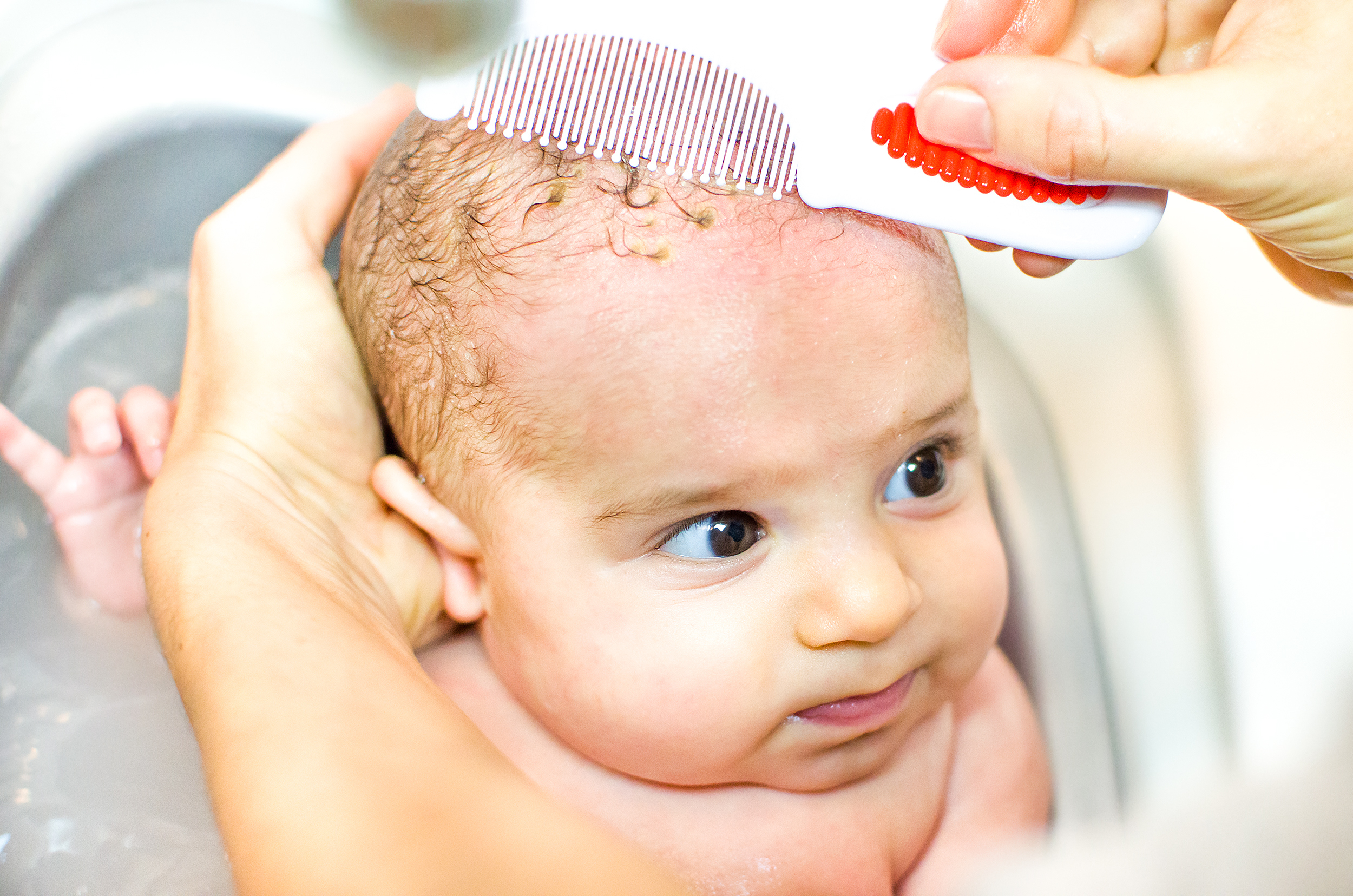What is Cradle Cap?
What is on your baby’s scalp?
It happens to most new parents, and it can be disconcerting. You’re snuggling your sweet new baby, inhaling that delicious baby smell, when you notice something a bit, well, icky. Red scaly or crusty yellow patches disrupt the sweet softness of your infant’s scalp, blotch your baby’s beautiful face, or appear in the diaper area. What is that? It’s cradle cap, and here’s what you need to know about it.
Cradle Cap is a Common Condition
Cradle cap is scientifically known as seborrheic dermatitis, and it can develop when a baby is between two and 12 months old. Generally, it starts on the scalp, as red or yellow patches that are greasy, scaly, or flaky, but it can also start on the face or in the diaper area, armpits, or any other place where the skin folds and creases. In creases and folds like the neck or behind the ears, it appears red and moist. It may look uncomfortable, but it doesn’t typically bother infants. Unlike atopic dermatitis, it is not itchy.
Causes of Cradle Cap
No one really knows what causes cradle cap, but it’s probably more than one thing. Oil buildup in the oil glands and hair follicles, combined with yeast found on the skin, play roles in its development. It is also thought that hormones passed along from the mother to the child before birth can contribute to the formation of cradle cap. What is known is that it is not the result of poor hygiene, and it is not contagious. A doctor can diagnose cradle cap by looking at it, and it will generally get better whether it’s treated or not. However, you might want to treat it, just to get those scales off of your baby’s scalp.
Treating Cradle Cap
Sometimes, cradle cap can be prevented with daily hair washing. Wash your baby’s scalp with a mild, tear-free shampoo, and remove the scales with a soft brush or toothbrush. If the scales are too stubborn for gentle shampoo, try a bit of baby oil, mineral oil, or olive oil, allowing the oil to soak into the scales so that you can loosen them with a soft brush. Once you’ve done that shampoo as usual. Be careful not to use any shampoos with nut oil on a child under five years of age.
Does cradle cap require a doctor visit?
If the cradle cap won’t clear up with regular shampooing, you might want to ask your pediatrician for help. He or she might recommend a mild steroid cream or antifungal shampoo, or a cream for parts of the body other than the scalp. Don’t use any over-the-counter anti-seborrhea shampoos, steroids, or antifungal creams on your baby without asking your doctor first. In some cases, seborrheic dermatitis in skin folds or the diaper area can get infected. If you notice signs of infection, like warm, red skin or fluid draining, call the pediatrician. Usually, though, cradle cap and seborrheic dermatitis clear up by 12 months of age, but may come back during puberty as dandruff.
Healthy Babies Start with Healthy Parents
At the Center for Vasectomy Reversal, we love helping people grow their families. We pride ourselves on helping men improve their fertility through uncompromising, concierge-level patient care. Under the direction of Dr. Joshua Green, our team provides state-of-the-art treatment for men who need a reversal of their vasectomy or have other fertility concerns. To learn more, contact us through our website or call 941-894-6428. For more parenting tips, click on the link to our blogs!
Recent Posts
Popular Posts
categories
- Uncategorized
- Sperm Retrieval
- vasectomy reversal
- Emergency
- Dr. Green
- sperm count
- fertility
- male infertility
- MESA
- medical care
- low sperm count
- IVF
- male fertility testing
- anesthesia
- pregnancy
- sperm aspiration
- semen analysis
- post-vasectomy pain syndrome
- infertility
- VE
- anti-sperm antibodies
- older dad
- general anesthesia
- gender reveal party
- post-operative infections
- baby name
- parent
- baby's first year
- fertilization process
- spinal anesthesia
- ACS Fellow
- nutrition tips
- concierge-level care
- fertility planning app
- azoospermia
- out-of-town patients
- V-V
- post-vasectomy reversal
- conceiving
- vasectomy
- vasoepididymostomy
- smoking
- sperm quality
- baby registry
- infographic
- surgical care
- surgical consultation process
- prostate cancer
- baby gender
- family time
- COVID
- Baby Shower
- Child Care
- Halloween Costume Ideas for Babies
- Halloween
- Halloween Safety Tips
- Celebrity Infertility Spotlight
- Postpartum
- testosterone
- Father's Day
- Father
- Men's Health
- Thanksgiving
- Pregnancy Announcement
- Parenting Tips
- Sperm

